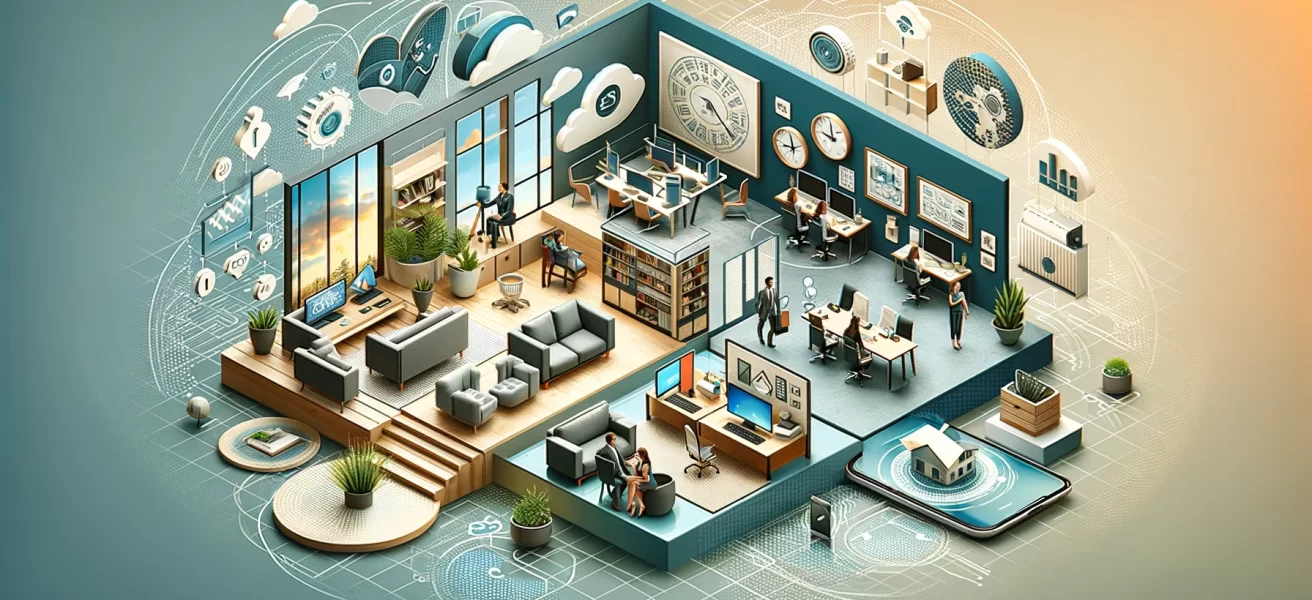In today’s fast-paced world, effective communication skills is more than just exchanging information; it’s about understanding the emotions and intentions behind it. As much as communication defines human interaction, mastering its art can significantly enhance personal and professional relationships. This article delves into the foundational elements of effective communication and progresses to more advanced techniques.
We will explore the key components, address common barriers, and offer actionable advice on applying these skills across various contexts. By embracing these insights, you can improve how you connect with others, make your interactions more engaging and productive, and ensure that you are understood exactly as intended.
Learn More About Stress Management: Effective Techniques to Manage Your Stress
Understanding Basics Of Communication Skills
Effective communication skills are the cornerstone of successful interactions in both personal and professional settings. At its core, communication involves exchanging information between individuals through speaking, listening, and nonverbal cues. It enables individuals to share their ideas, express their feelings, and collaborate effectively. This segment explores the fundamental aspects of communication, highlighting why mastering these basics is essential for anyone looking to enhance their interpersonal skills.
The Essence of Communication
Communication serves various purposes: informing, persuading, entertaining, and even consoling. At its simplest, it involves a sender transmitting a message to a receiver via a medium, which can be verbal, written, or non-verbal. The effectiveness of this process is measured by how accurately the receiver understands the message. This accuracy is not only about the clarity of the message but also about the receiver’s ability to decode it in the intended spirit.
Components of Basic Communication
The basic components of effective communication skills include:
Sender: The person who initiates the message.
Message: The information, idea, or feeling that the sender wishes to convey.
Medium: The method through which the message is conveyed, such as spoken words, written text, or body language.
Receiver: The person or group for whom the message is intended.
Feedback: The response from the receiver indicates whether the message has been understood as intended.
Understanding these components helps craft clear and effective messages, ensuring the intended message is successfully communicated.
The Role of Context
The context in which communication takes place can significantly affect its effectiveness. This includes the communicators’ physical surroundings, emotional state, and cultural background. For instance, a conversation in a noisy environment may require different communication tactics than in a quiet, intimate setting. Similarly, emotional states such as anger or happiness can influence the delivery and interpretation of a message.
Importance of Clear Communication
Clear communication is vital because it minimizes misunderstandings and fosters a positive environment for dialogue. It’s essential in building and maintaining relationships, solving problems, making decisions, and executing tasks efficiently. Effective communication is linked to higher job satisfaction, better performance, and increased productivity in the workplace.
This foundational understanding of communication improves interpersonal skills and equips individuals with the tools needed for more complex communication scenarios. By mastering these basics, communicators can ensure their message is heard, understood, and acted upon effectively.

Key Components of Effective Communication
Effective communication skills are multifaceted and involve several critical components that ensure messages are sent, received, and understood as intended. This section delves into the three main pillars of effective communication: verbal, nonverbal, and listening skills. Understanding and mastering these components can significantly enhance one’s ability to interact successfully in personal and professional environments.
Verbal Communication Skills
Verbal communication encompasses the words we choose to express ourselves, which can be spoken or written. The clarity of the message, the tone of voice, and the choice of words all play crucial roles in effective verbal communication. It’s not just about what is said but also how it is said. Here are some tips for enhancing verbal communication:
Clarity and Brevity: Keep your messages clear and concise to avoid misunderstandings.
Tone Matching: Adjust your tone according to the context and the listener’s emotional state.
Positive Language: Use positive words and phrases to foster good relationships and encourage conversation openness.
Non-Verbal Communication Skills
Often, what we don’t say speaks louder than our words. Non-verbal communication includes facial expressions, body language, gestures, eye contact, and physical distance between the communicators. These cues can provide significant insights into the communicator’s true feelings and intentions and reinforce or contradict what is being said. Effective non-verbal communication involves:
Consistency: Ensure your body language aligns with the verbal message.
Awareness: Be aware of the cultural differences in non-verbal communication to avoid misinterpretations.
Responsiveness: Use non-verbal cues to show attentiveness and respect during conversations.
Listening Skills
Effective communication is not just about transmitting information but also about receiving it. Listening is perhaps the most critical aspect of communication, as it involves interpreting and responding to both verbal and non-verbal messages sent by others. Active listening can enhance understanding and build stronger relationships. Key aspects include:
Engagement: Show that you are listening by nodding or using other affirming gestures.
Feedback: Provide feedback that confirms understanding of the message.
Empathy: Try to understand the speaker’s perspective, which can help you respond more effectively.
By refining these communication components, individuals can navigate various social and professional situations more effectively, ensuring their interactions are productive and meaningful.

Barriers to Effective Communication
Understanding and navigating the barriers to effective communication skills is crucial for anyone looking to enhance their interpersonal skills. Whether in a professional setting or personal interactions, these barriers can hinder the transmission and understanding of messages. This section explores common obstacles to effective communication and provides strategies to overcome them.
Psychological Barriers
Emotional states such as stress, anger, or sadness can impede someone’s ability to communicate effectively. These emotions can distort the sender’s message and the receiver’s perception. To overcome these barriers, it is essential to:
Manage Emotions: Recognize and control your emotions before engaging in communication.
Empathy: Try to understand and respect the emotional state of others. This can help adjust the message so that it is more effectively received.
Physical Barriers
Environmental factors like noise, distance, or poor internet connectivity can also prevent clear communication. Addressing these issues involves:
Improving Conditions: Enhance the physical setting where communication occurs, such as reducing noise or ensuring a comfortable meeting environment.
Using Technology Effectively: Utilize communication technologies appropriately to bridge physical gaps, ensuring tools are suitable and effective for the context.
Language Barriers
Differences in language or jargon can lead to misunderstandings. To mitigate these, one can:
Simplify Language: Use clear and simple language that can be easily understood by all parties.
Clarify Meanings: Do not assume understanding; ask for clarifications to ensure all parties agree.
Cultural Barriers
Cultural differences can affect interpretation and interaction styles. To effectively communicate across cultures:
Cultural Awareness: Educate yourself about different cultural norms and communication styles.
Inclusivity: Adopt an inclusive approach by respecting and accommodating diverse perspectives in communication.
Technological Barriers
In the digital age, reliance on technology for communication comes with its own challenges, such as misinterpretation of written texts or the impersonal nature of emails. Overcoming these requires:
Appropriate Medium Choice: Choose the right medium for your message—some communications are better-handled face-to-face than email.
Feedback Loops: Ensure a feedback mechanism exists to confirm understanding, especially in digital communications.
By recognizing and addressing these barriers, communicators can enhance their effectiveness and ensure that their messages are delivered and received as intended.

Advanced Techniques in Effective Communication
Adopting some advanced techniques can elevate your communication skills beyond the basics. These strategies can help you communicate more effectively, particularly in complex or sensitive situations. This section covers key advanced techniques such as using empathy, ensuring clarity, and providing constructive feedback.
Empathy in Communication
Empathy is the ability to understand and share the feelings of another. It plays a crucial role in effective communication because it helps to bridge gaps between different perspectives and fosters a supportive dialogue environment. To communicate empathetically, consider the following:
Active Listening: Focus fully on the speaker, showing genuine interest and asking questions to clarify and deepen your understanding.
Acknowledgment: Recognize the feelings and thoughts of others even if you don’t agree with them. This shows respect and validation for their perspective.
Ensuring Clarity and Precision
Clarity in communication ensures that your message is understood exactly as you intend. This can be achieved through:
Simplicity: Use clear, straightforward language that avoids ambiguity.
Structure: Organize your thoughts and deliver your messages in a logical, coherent manner that is easy to follow.
Consistency: Repeat key points to reinforce the message and ensure understanding.
Providing Constructive Feedback
Feedback is vital in communication as it helps individuals and organizations to grow and improve. Effective feedback should be:
Specific: Avoid general comments and focus on specific behaviors or events.
Balanced: Combine positive feedback with constructive criticism to encourage and guide.
Timely: Give feedback as close to the event as possible to ensure it is relevant and actionable.
These advanced communication techniques can significantly improve your interactions and help you handle various communication challenges more effectively. Whether you are giving a presentation, negotiating a deal, or just chatting with friends, these strategies will enhance the clarity and impact of your communications.

Applying Communication Skills in Various Contexts
Effective communication skills are versatile and can be applied in various contexts, from professional settings to personal relationships and digital interactions. This final section explores how to effectively adapt and apply these skills across different environments to achieve clear and productive communication.
Professional Environment
Effective communication facilitates collaboration, enhances team dynamics, and improves conflict resolution in the workplace. Key practices include:
Regular Updates and Meetings: Maintain open lines of communication with regular updates and meetings to keep everyone informed and engaged.
Clear Objectives and Roles: Ensure everyone understands their objectives and roles within the team to prevent confusion and overlap.
Feedback Culture: Foster a culture where giving and receiving constructive feedback is encouraged to promote growth and improvement.
Personal Relationships
Communication is the backbone of any relationship. It builds trust and understanding. To enhance communication in personal relationships:
Active Listening: This means giving your full attention to the conversation and showing genuine interest in the other person’s feelings and opinions.
Honesty and Transparency: Communicate your thoughts and feelings openly to build trust and deepen connections.
Conflict Resolution: Use effective communication techniques to navigate disagreements constructively without escalating tensions.
Digital Communication
With the rise of remote work and social media, digital communication has become indispensable. Here are some tips for effective digital communication:
Clarity and Conciseness: Digital messages should be clear and to the point to avoid misinterpretation, especially in texts or emails where tone can be hard to gauge.
Appropriate Use of Tools: Based on the purpose and urgency of the interaction, choose the right communication tools (e.g., email, messaging apps, video calls).
Digital Etiquette: To maintain professionalism and courtesy, respect digital communication etiquette, including timely responses and appropriate language.
Mastering effective communication across these diverse contexts enhances personal interactions, broadens professional opportunities, and improves overall social engagement.
Conclusion
Effective communication skills are essential for navigating the complexities of today’s interconnected world. Communication is vast yet vital, from the basics of verbal, non-verbal, and listening skills to more advanced techniques involving empathy and feedback. This article has explored these dimensions, offering insights and strategies to enhance communication in professional settings, personal relationships, and digital interactions.
Applying these principles across different contexts can improve your interactions and relationships, leading to more successful and fulfilling engagements. Whether speaking to a colleague, chatting with a friend, or emailing a client, remember that effective communication is the key to mutual understanding and respect. Embrace these skills to express yourself clearly and foster meaningful and productive connections.







